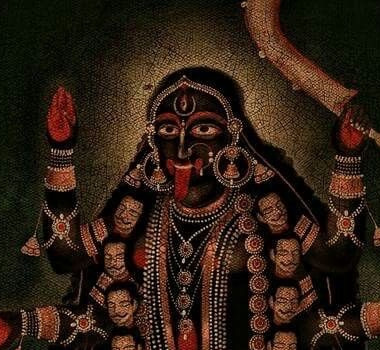 Lalah and Eastern Spirituality
Lalah and Eastern Spirituality
But first, to correct a common
misconception: Lalah is not wearing a bindi and she is not
necessarily a Hindu herself. I've seen many fan wikis assume this and then
make further assumptions based on that. But according to Tomino, she
simply has a birthmark in her third eye area, which gives her a
bodhisattva-like appearance. (More on that below.) He also portrayed
her as agnostic in Secret Rendezvous: Amuro and Lalah, where she wonders if she
will be reincarnated as a mouse (more of a Hindu belief) or if she
will achieve nirvana (more of a Buddhist belief.) So Lalah is
certainly familiar with both Hinduism and Buddhism but she isn't meant to be one or the other. Also, bindis aren't exclusive to Hindus anyway.
Another note: Lalah's comrade has
many names but she calls him "Taisa" ("Captain" in English)
so that's what I'll be referring to him as here.
Lalah concept art by Tomino. She is
making a gyan mudra with her hands. This is a spiritual gesture
associated with concentration, wisdom, enlightenment, etc.
 Lalah as a Bodhisattva
Lalah as a Bodhisattva
Lala's clear voice resonated pleasantly in his ears. She wore a pale yellow one-piece outfit with long billowing sleeves trailing in the air as she walked, and it made her tawny skin appear almost glistening black. There was something quite incongruous about the sight of her in the impersonal lobby of an agency charged with developing new fighters for the Zeon forces. Smack in the middle of her forehead, almost like the light-emitting third eye of a bodhisattva, was a beauty mark. Her real eyes were emerald-green and hinted at an ancestry more complex than that of most Asians. Her limbs moved with grace as she glided directly up to him. She lacked any natural fragrance and had an altogether ethereal quality to her.
Tomino says Lalah looks like
a bodhisattva two times in Mobile Suit Gundam: Awakening, the first Gundam novel he wrote.
Bodhisattvas are like Buddhist saints- people who have been liberated
from samsara (the cycle of birth and death and rebirth) but who choose to stay in
this realm to help others.
When Amuro first meets Lalah, she is
watching a whooper swan. In the TV version, the swan dies and she
says, "Isn't it sad to watch them grow old and perish?"
In the movie version, the swan is fine, but Lalah still says, "I was
thinking how sad it was that it will grow old and die someday."
This scene could be understood as a reflection on samsara.
In Hinduism, the hamsa (swan or goose)
is a symbol of moksha (liberation from samsara.) When Lalah
appears as a swan after she is killed, this shows she has escaped samsara. She died, but she isn't dead- she
is totally outside the life/death cycle.
 Lalah as a Goddess
Lalah as a Goddess
Lalah is a modern representation of an
ancient goddess. I'm not just saying that because I like her! Some
of the other Gundam characters are also inspired by deities.
"The enormous giant was painted in a
color that resembled the flowers of the bougainvillea, descending
like Shiva"- this is how Taisa's mobile suit is perceived by
Lalah in the novel Secret Rendezvous: Amuro and Lalah. Shiva is the Hindu god of
destruction. It's his job to destroy the universe, so that it can be remade better than before. Hindus
believe the universe goes through extremely long cycles where things
may be mostly good or mostly evil. When an evil cycle ends, a good
one can begin.
Now, if we look at the Zeta proposal
that Tomino wrote, it says that Taisa "felt he had to find a way to
put an end to this cancerous cycle of history" and that he "may
also believe in Shakti."
Shakti is the main goddess in Hinduism.
All the other goddesses are incarnations of her. Hindu gods have many
different manifestations which are considered different elements of
the same god, similar to the Christian concept of the trinity.
In my opinion, there are two main avatars of Shakti who inspired
Lalah.

The goddess Kali with her characteristic black skin and third eye. She wears a garland made of severed heads.
The first is Kali. Kali is a warrior
goddess of time and destruction. She also happens to be Shiva's
consort. You've probably seen art of her even if you didn't know
her name. She is known for having dark skin (black symbolizes
infinity and the void) and for killing demons. But even though she is
strongly associated with killing and death, she is also considered a
mother goddess. "Kali is stated to
protect and bestow liberation (moksha) to devotees who approach her
with an attitude of a child towards mother." Hmm... who does that
sound like?
The other Shakti goddess relevant here
is Sati. Sati was Shiva's first wife, however, her father didn't
approve of the marriage and this upset Sati so much that she killed
herself. This caused Shiva to go mad with grief and he attempted to
destroy the entire universe, even though it wasn't the proper time
for that yet. In the end, he was stopped by Vishnu, the god of
preservation, whose job is to maintain the universe. You can see the
similarity between this and the Axis drop plot in CCA, where Amuro
plays the role of Vishnu.
Tomino would later name a character "Shakti" in Victory Gundam, so he clearly had an interest in this goddess for a long time!